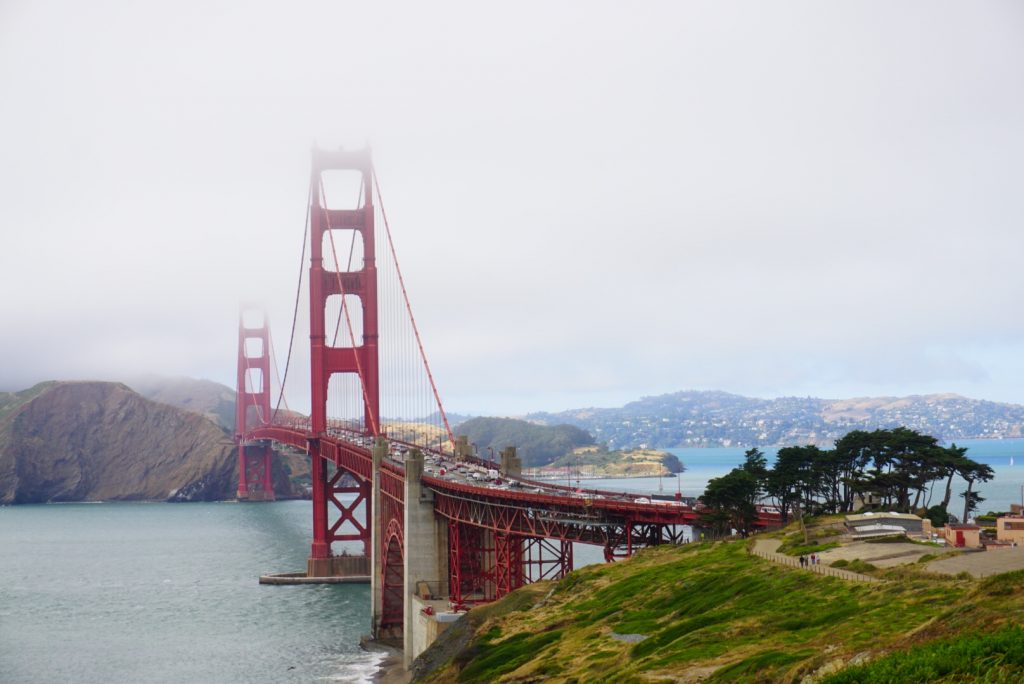Golden Gate Bridge seems just like another bridge. As you see it more and more, you begin to realise its elusive quality.
Mornings in San Francisco seem to always start with a fog hanging in the air. As the morning progresses, the fog is burned away if the sun does its magic. The Golden Gate Bridge, being adjacent to the Pacific Ocean seems to be hit hardest with the fog. More often than not, when I could see the bridge, it was at least half covered in fog.
Taking photos of the complete bridge became a battle against the fog. On one day, when I was hiking in Angel Island, about thirty minutes from San Francisco, the fog did lift. When I returned from the island, I headed for the bridge. I found a good spot at Marshall’s Beach and scrambled over the rocks to get closer to the bridge without the view being blocked.
Once I positioned myself for sunset, it turned out that several other photographers had the same idea! They arrived with their professional cameras and tripods.
As the evening progressed, we were treated to reasonable views of the bridge – the best I’d seen in the week I was in San Francisco.
The bridge gets its name from the Golden Gate Strait, which is the entrance to San Francisco bay from the Pacific Ocean. Opened in 1937, it had the longest suspension span (1.2km) in the world until 1964. It’s not black or grey but rather orange vermilion (aka “International Orange”) because the designers wanted it to blend in with its warm surroundings and also because it’s more visible to boats, even with the fog.
There’s lots of earthquake-proofing built into the bridge which allows it to move vertically and horizontally by several meters without causing damage. There are small model bridges near the bridge that let you simulate various types of movement and see how the bridge copes with it.




































